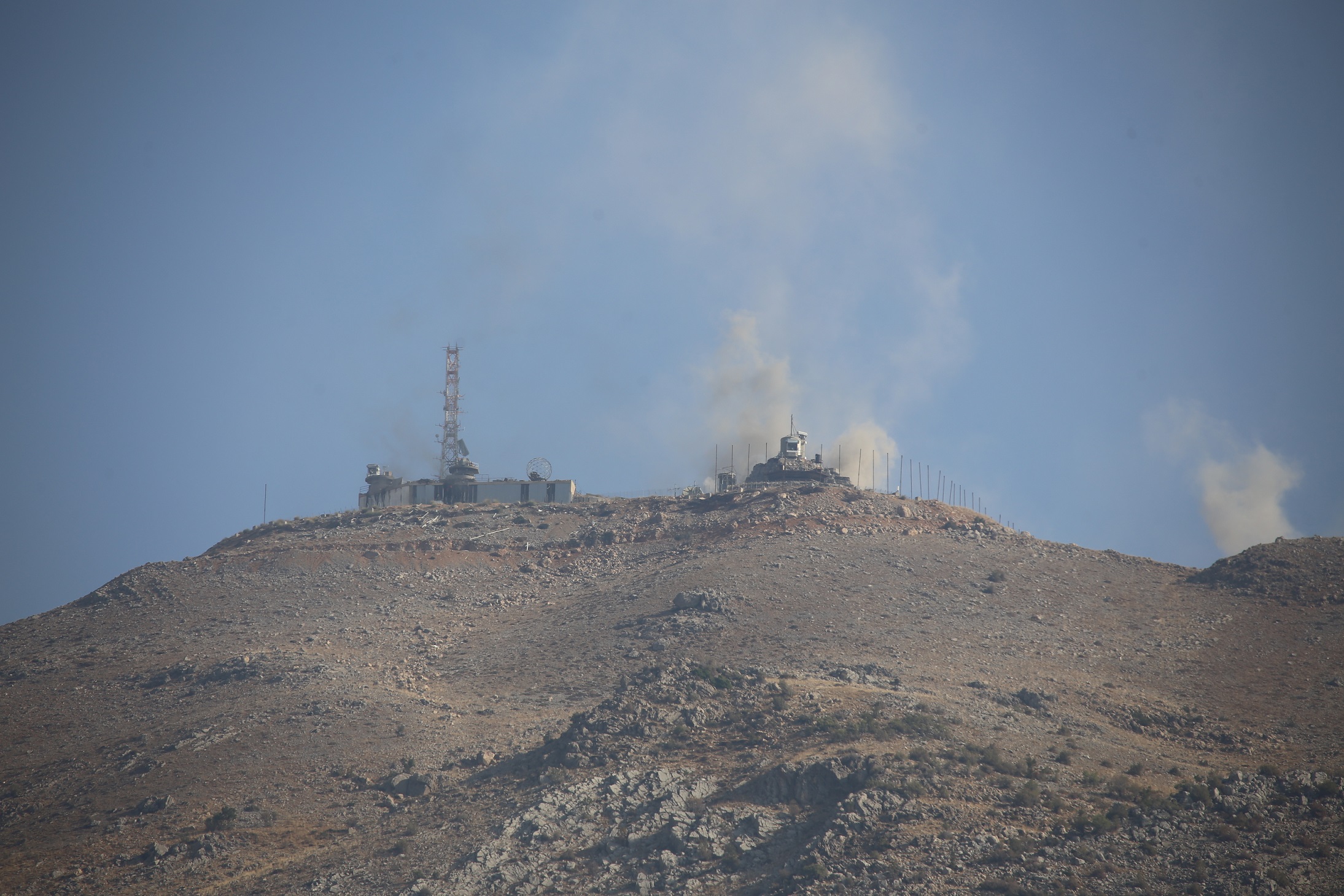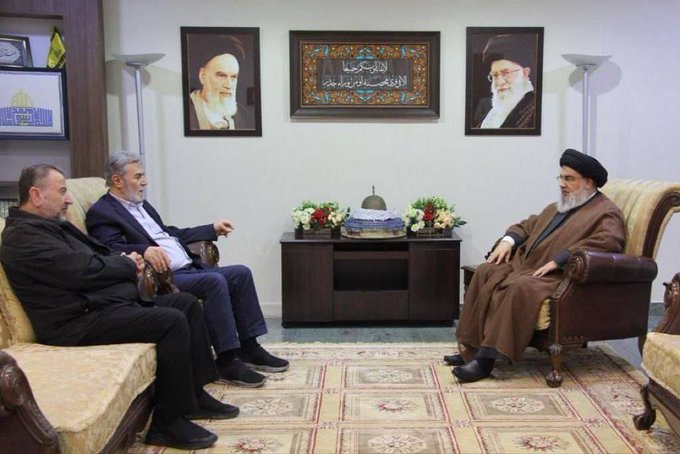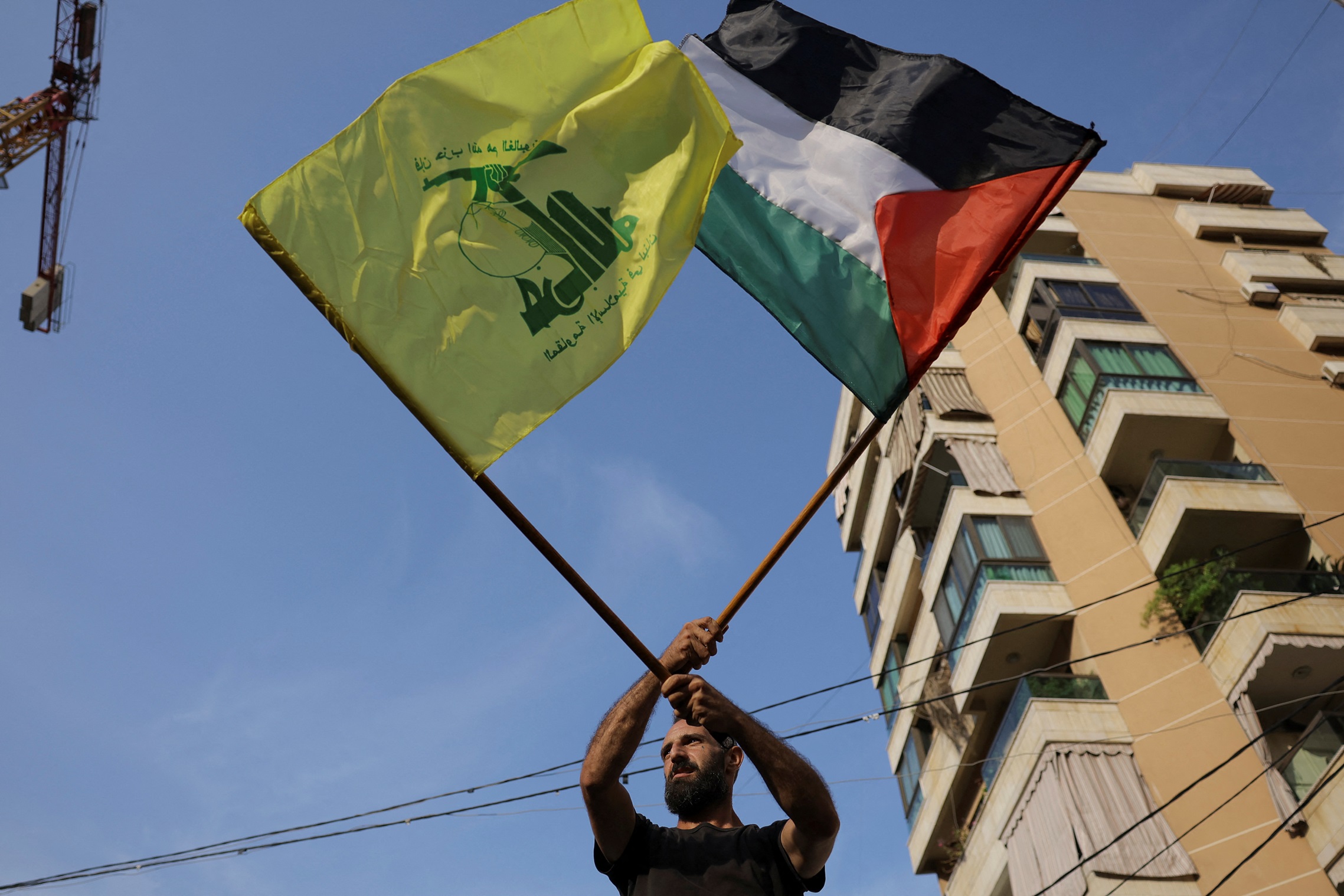Publications
INSS Insight No. 1775, November 1, 2023
Since the start of the war in Gaza, the IDF has been involved in a low intensity conflict along the Israel-Lebanon border with Hezbollah and Palestinian elements operating there with its approval. Hezbollah fired the opening shot (on October 8), but has so far limited its activity: mainly firing rockets and guided anti-tank missiles, and attempting to infiltrate into Israel. The IDF’s symmetrical but determined response, which has caused the death of dozens of Hezbollah operatives, led to a reduction in the scope of action from Lebanon, which expanded again and was even stepped up following the start of the ground offensive in Gaza (on October 28). Hezbollah is expected to try to maintain a “hot” border and throughout the war in Gaza retain the option of opening another front. This requires of Israel a high level of readiness in the northern arena, while efforts are focused on Gaza. In this situation, IDF actions in southern Lebanon will likely continue to be limited in order to avoid widening the campaign. Yet at the same time, targets for attack must be selected with the goal of changing the balance of deterrence in Israel’s favor for the day after the war.
Immediately after the murderous attack by Hamas on communities and cities in the western Negev, Hezbollah mobilized to generate escalation along the Lebanese border. The organization fired the opening shot on the second day of the war (October 8) and thus breached the relative calm that has prevailed on that front since the Second Lebanon War (2006), apart from local incidents and sporadic shooting. The first rockets were fired toward Mt. Dov. Hezbollah took responsibility, defining the action as a demonstration of its identification with the Palestinian struggle, and a reminder, if only with lip service, of the need to liberate the remainder of what it calls “occupied” Lebanese land. Since then, the method chosen by Hezbollah reflects its interest in maintaining a low level of conflict, using mainly rockets, mortars, guided anti-tank missiles – directed, it claims, at military targets – as well as firing unmanned anti-aircraft rockets. This is joined by attempts at infiltration plus rocket fire at civilian targets in the Galilee by Palestinian squads (Hamas and Palestinian Islamic Jihad), with the approval and direction of Hezbollah. All this is below the threshold of war.
The response by the IDF, which is currently focused on the fighting in the Gaza Strip, was at first symmetrical and measured, increasing in intensity as the incidents continued. The IDF thwarted infiltration attempts and Hezbollah squads firing anti-tank missiles, limited the scope of the attacks, and killed dozens of fighters (as of October 28, Hezbollah reported the deaths of 48 of its combatants and the elimination of four Islamic Jihad and three Hamas operatives). The IDF also caused considerable damage to Hezbollah positions along the border and to its military installations. From October 26 there was less activity, but attacks renewed on October 28 when Israel announced the start of a new phase of the war in Gaza, including the entry of IDF forces into the Strip, and on October 29 there were signs of a significant increase in the scope of incidents and the extent of activity on both sides. This echoes the “threat” from Iran and Hezbollah that they would expand their military moves following Israeli ground maneuvers.

From the start of the war Hezbollah has maintained close contacts with its partners on the “resistance front,” particularly with Iran (the Iranian Foreign Minister has visited Beirut several times), and with the representatives of Hamas (senior Hamas commander Saleh al-Arouri) and PIJ (leader Ziyad al-Nakhalah) residing in Lebanon. Hezbollah and Iran are also likely involved in decisions regarding the activity of other front members against Israel – firing from Syrian territory, firing by the Houthis in Yemen, and attacks by Shiite militias in Iraq.
So far, Hezbollah Secretary General Nasrallah has avoided referring to the events in public, apparently in order to maintain vagueness over the organization’s strategy and not to commit to specific types of involvement in further fighting, However, it has been reported that he will deliver a speech on November 3, and his representatives stress that he is involved in making decisions and managing the campaign. A member of the Hezbollah faction in the Lebanese parliament, Hassan Fadlallah, stated at a press conference (October 22) that Nasrallah is closely following developments and overseeing the fighting at all levels, and his avoidance of appearances in the media is intended to “confuse the enemy.” Nasrallah also released (on October 22) a handwritten directive to the organization’s institutions to refer to the Hezbollah dead as “martyrs on the way to Jerusalem.”
At the same time, Hezbollah is conducting a cognitive campaign through its senior leaders and its own media outlets, demonstrating its apparent achievements, its readiness, and its determination to continue its actions against Israel and even escalate the operation, depending on developments in the campaign against Hamas. The aim is to influence the IDF war plan and limit what it achieves in Gaza. In order to recruit public support in Lebanon and justify its involvement in the fighting, Hezbollah spokesmen claim that this involvement serves the interests of Lebanon and its defense. This involves a forced, mechanical link between “Israeli aggression” in Gaza and Israel’s purported threat to Lebanon.

In Lebanon there are signs of deep resentment and concern among the political leadership and the general public, particularly among those who are not part of the Shiite community. Statements by leading Lebanese politicians indicate clear opposition to Lebanese involvement in the war. The Prime Minister of the transitional government, Najib Mikati (Sunni), and Foreign Minister Abdallah Bou Habib (Christian), as well as Gebran Bassil, head of the Free Patriotic Movement, Hezbollah’s Christian partner, and naturally members of the opposition to Hezbollah, all demonstrate solidarity with the Palestinians, but at the same time underscore that Lebanon is not interested in opening another front against Israel, stressing that the outcome would be unbearable for the Lebanese. At meetings with international and regional elements, both the Prime Minister, who announced an emergency plan and spoke with the commander of the Lebanese Army and the commander of UNIFIL, and the Foreign Minister stress their commitment to Resolution 1701. They are eager to avoid war, in part in view of the expected severe consequences on a country that is already mired in the most serious economic crisis of its history.
The public’s fears of approaching war can be seen in the numbers evacuating the villages along the Israeli border and moving north (estimated at about 30,000 individuals by the UN International Organization for Migration). The impact of the tension on the Lebanese economy can already be seen in the reduced number of tourists, alongside calls by international and regional countries for their nationals to leave Lebanon. Over the past year, there were signs of recovery in the tourism industry, which is an important source of revenue for Lebanon, and a reversal of this trend would bode poorly for the state economy.
Hezbollah’s decision to initiate conflict as soon as war broke out in the south reflects its drive to highlight its commitment to the “resistance front” and work on behalf of the Palestinian issue, particularly in view of the despairing cries from Hamas leaders, who expected broader participation in their campaign against Israel from their partners in the Iranian-led “front,” in accordance with the “convergence of arenas” strategy. Hezbollah’s main objective (and apparently Iran’s as well) is to keep the IDF occupied on the northern front and thus weaken Israel’s operation against Hamas. They even tried to deter Israel from entering Gaza on the ground by signaling that if red lines (that were not precisely defined) were crossed, then there would be a significant response on the northern front and a widening of the campaign. It appears that Nasrallah is also trying to maintain his image as the leading force of the axis. Moreover, he sees the war between Israel and Hamas as an opportunity to improve the balance of deterrence against Israel in his favor.
On the other hand, Nasrallah’s goal of keeping the fighting at a low level, so far below the threshold of war, is the result of the familiar restraining elements, which leads to the generally accepted assessment that Hezbollah is not interested in a wider war with Israel. Among these constraints:
The organization’s recognition of the IDF’s ability to deal Lebanon a heavy blow and in fact cause its destruction (much has been written about the lasting effects of the Second Lebanon War on Nasrallah). At the same time, there is growing public criticism of the organization, whose legitimacy has begun to erode, which in turn challenges its ability to maintain its status as an independent militia serving external interests (Iran and Syria).
Iran’s position – the accepted assessment is that Iran’s interest is to retain Hezbollah as insurance for “Judgment Day,” i.e., an attack on Iran.
To these considerations can be added new restraining factors in light of the war in Gaza:
The complete military and political support of the United States for Israel, an important consideration in view of President Biden’s public warning to Hezbollah and Iran against launching a war against Israel, with hints of the possibility of using US troops, together with legitimacy for Israel from other Western countries. These limit the importance of the international political pressure on the IDF’s warfare considerations to stop firing.
The loss of the element of surprise: the IDF rushed to reinforce its forces and call up the reserves in the north. Today it is highly prepared for any scenario. Israel has also decided to take preemptive action by evacuating villages up to 5 km from the border.
The deterrence created by the IDF warfare against Hamas and the determination of the Israeli leadership and public to continue fighting for as long as necessary.
So far, Hezbollah activity since the start of the war in the south reflects its aim to keep the military conflict below the threshold of war, although it is hard to estimate how the organization will respond to the continuation and development of the Gaza war. Hezbollah will probably seek to maintain a “hot” border and the possibility of further degrees of escalation must be recognized, be they intentional or following unintentional deterioration and miscalculation. Therefore, while still focused on its objectives in Gaza, the IDF must maintain a high level of readiness in the north, with limited and contained actions in southern Lebanon, in order to avoid expanding the operation. At the same time, Israel must choose targets for attack in Lebanon with the goal of improving the balance of deterrence against Hezbollah, for the day after the war. Israel must also urge the United States to demonstrate by words and deeds the seriousness of its threats against Hezbollah and Iran.



